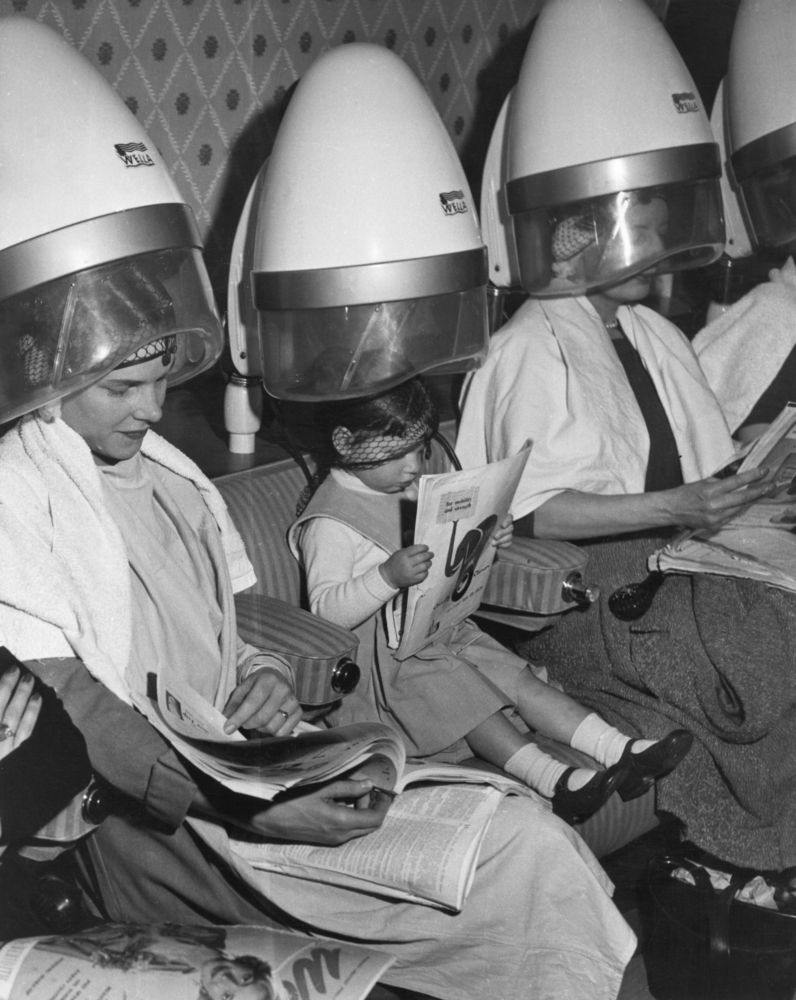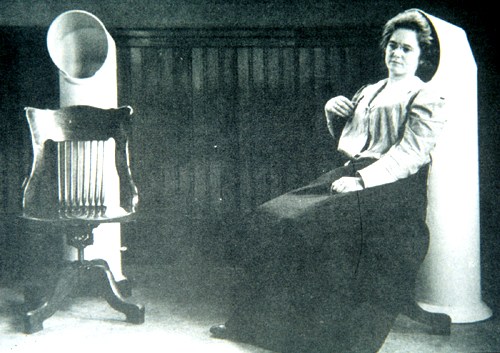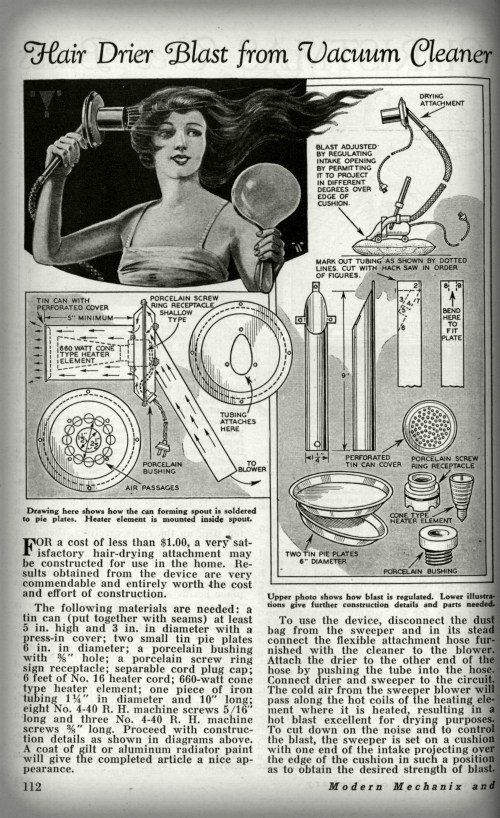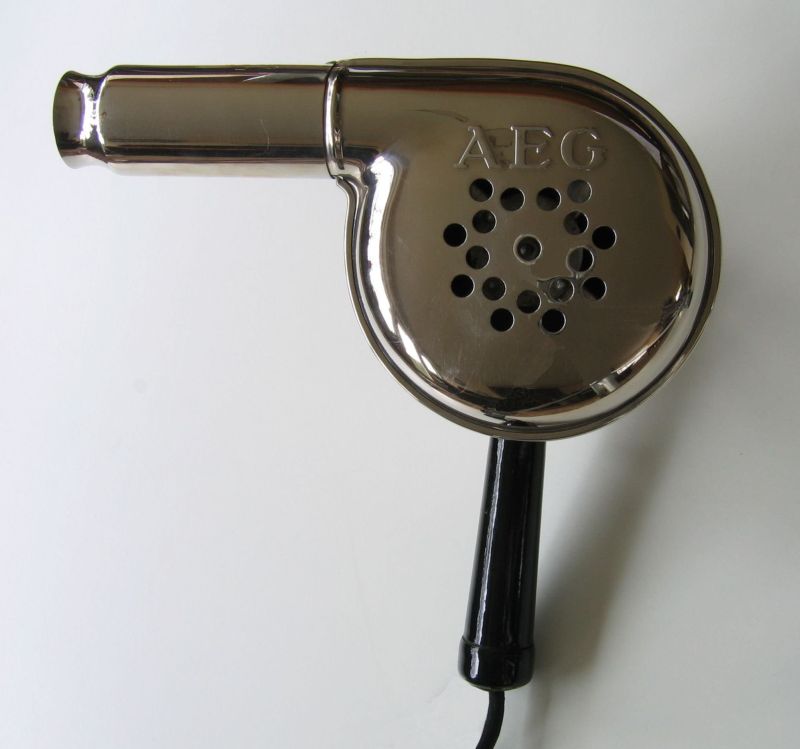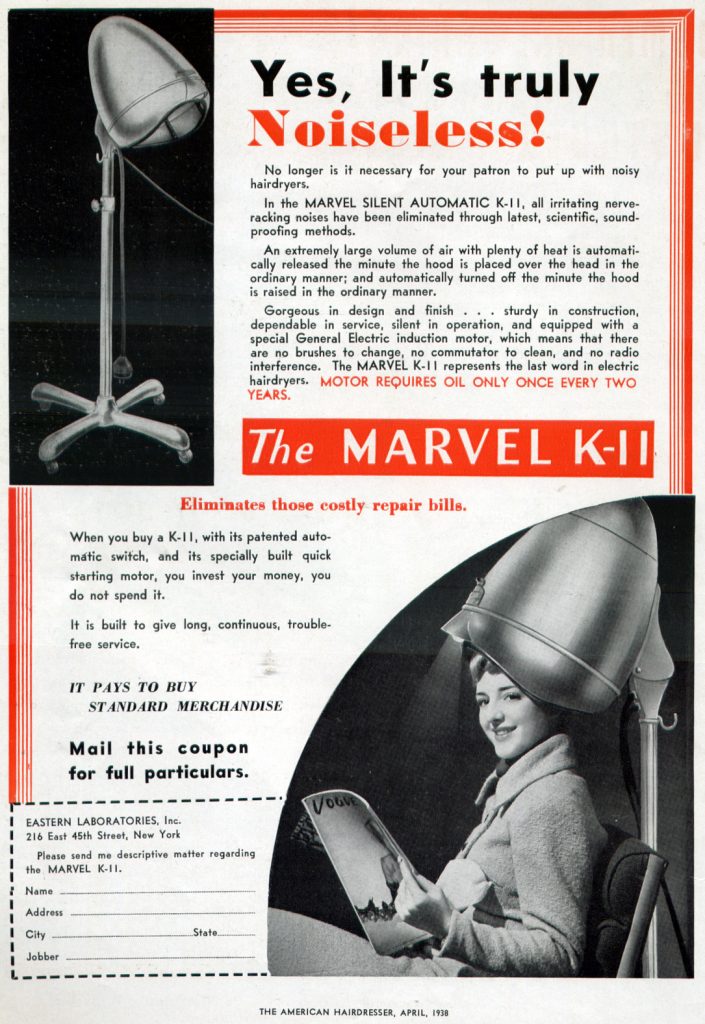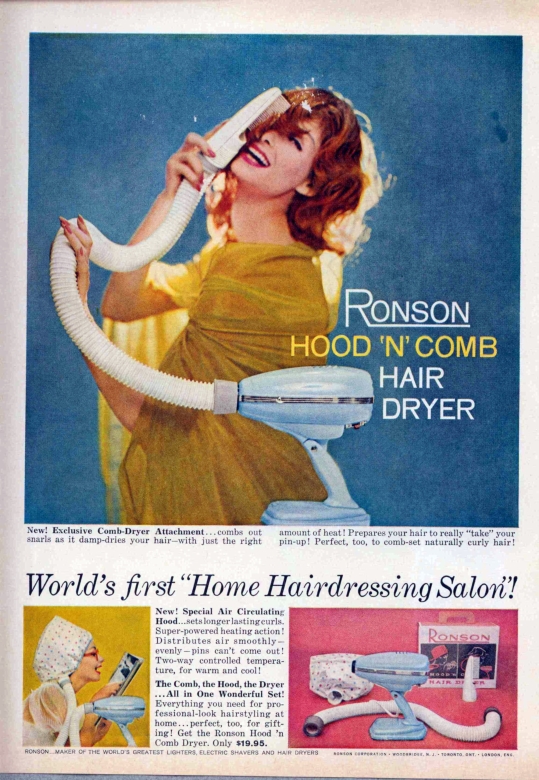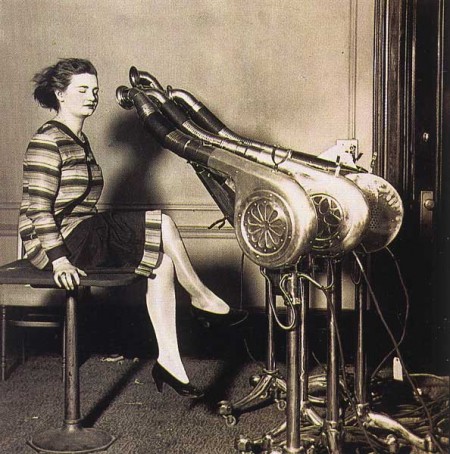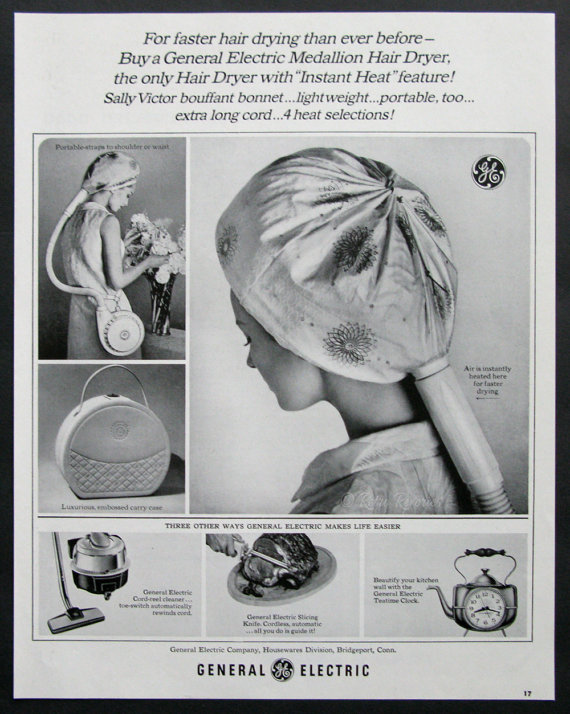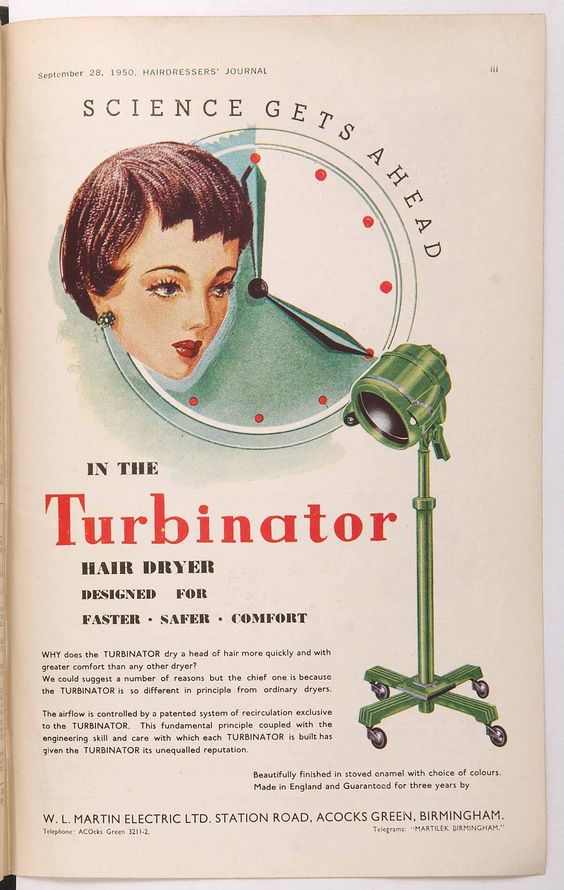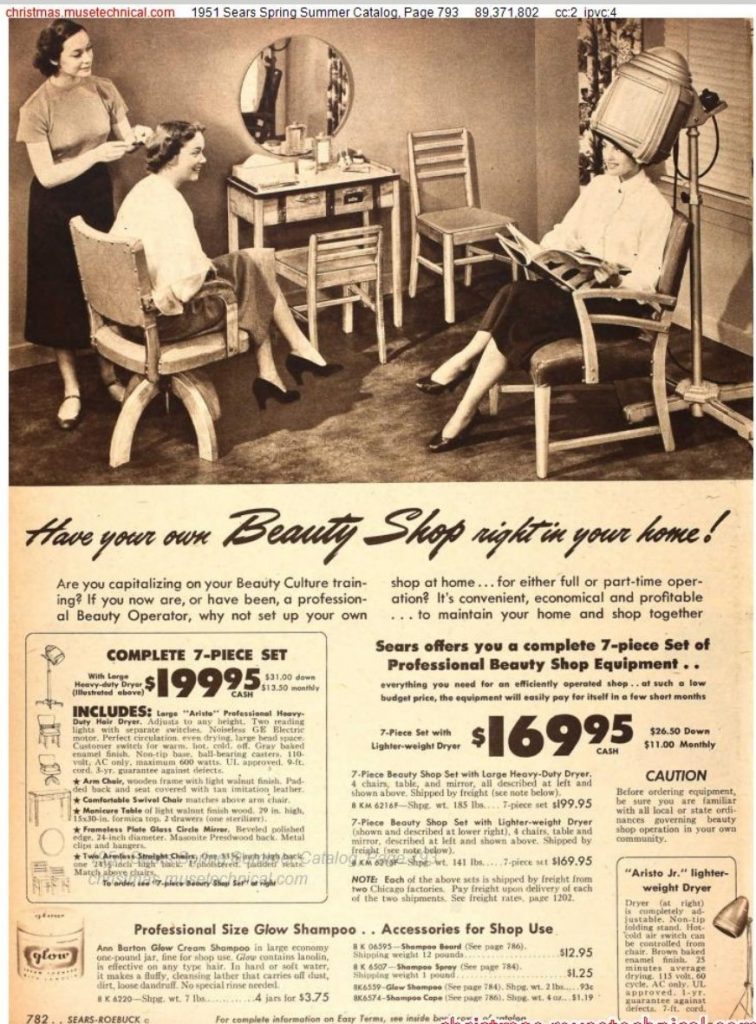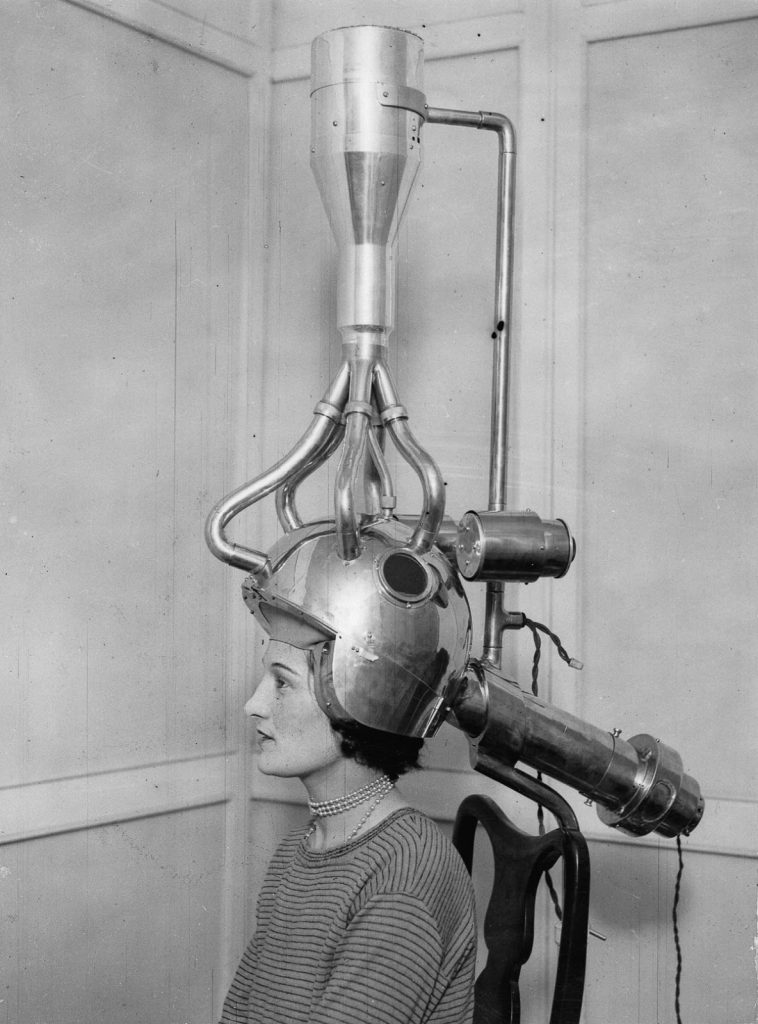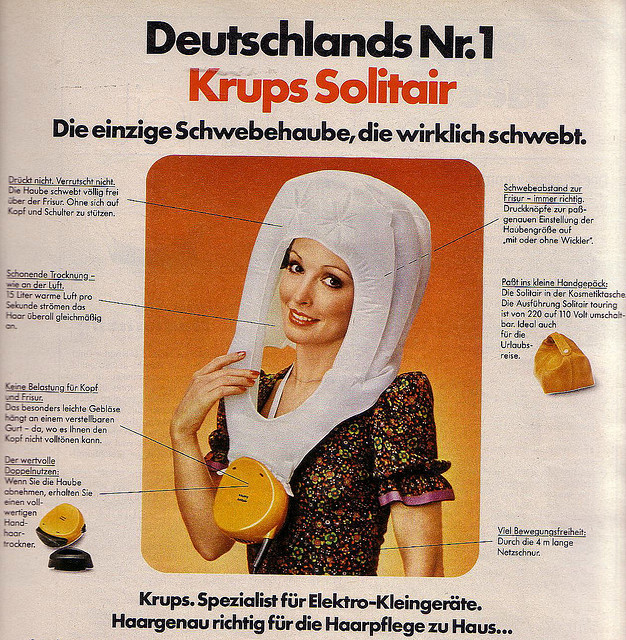Last week a dear friend of mine passed down a Vintage Lady Schick Hair Dryer that was her grandmothers. It’s in mint condition and will take my 8-10 hours of setting time for my hair to way less (not tested it yet but I’m hoping an hour tops!).

While I held this wonderful gem in my hands, I got to thinking that I actually had no idea about the history of hair dryers (not even one tiny fact). So for today’s post we will be having a brief history lesson (to fix my lack of knowledge) and then a roundup of vintage ads and images. Enjoy!
Disclosure: Some of the links on my blog from Etsy are Affiliate Links, meaning, at no additional cost to you, I will earn a commission if you click through and make a purchase.
The Hair Dryer-Vintage History, Images & Advertisements
Brief History of the Hair Dryer:
1890’s the hairdryer is invented by Alexandre Goldefroy, and consisted of a bonnet that attached to the chimney pipe of a gas stove. It was however big and bulky and not at all portable. PRIOR to this, woman were using vacuum cleaners to dry their hair, so this really was an improvement (I think).
1911-Armenian American inventor Gabriel Kazanjian was the first to patent a blow dryer in the United States (Source).
1915 (around)– Handheld dryers begin to appear on the market and became small enough to hold in your hand (thanks to companies like U.S. Racine Universal Motor Company and the Hamilton Beach Co).
Downfalls of the 1920’s Hair Dryers:
They were often heavy, weighing in at approximately 2 pounds (0.9 kg), and were difficult to use. They also had many instances of overheating and electrocution. Hair dryers were only capable of using 100 watts, which increased the amount of time needed to dry hair (the average dryer today can use up to 2000 watts of heat) (Source).
The 1950’s gave birth to the bonnet hair dryer, a small portable dryer connected by a tube to a plastic bonnet, as well as the rigid hood dryer, most frequently seen in today’s salons (Source).
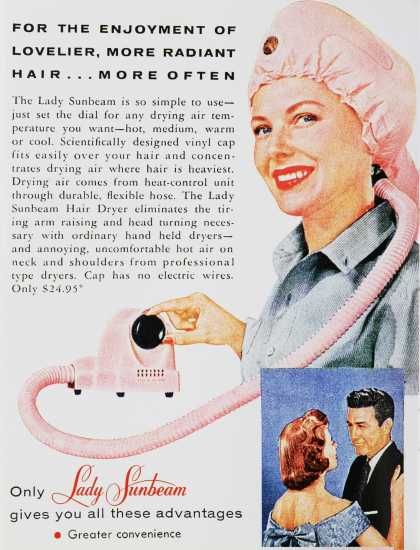

Since the 1920s, development of the hair dryer has mainly focused on improving the wattage and superficial exterior and material changes. In fact, the mechanism of the dryer has not had any significant changes since its inception. One of the more important changes for the hair dryer was the idea to make it out of plastic, so that it is more lightweight. This really caught on in the 1960s with the introduction of better electrical motors and the improvement of plastics.
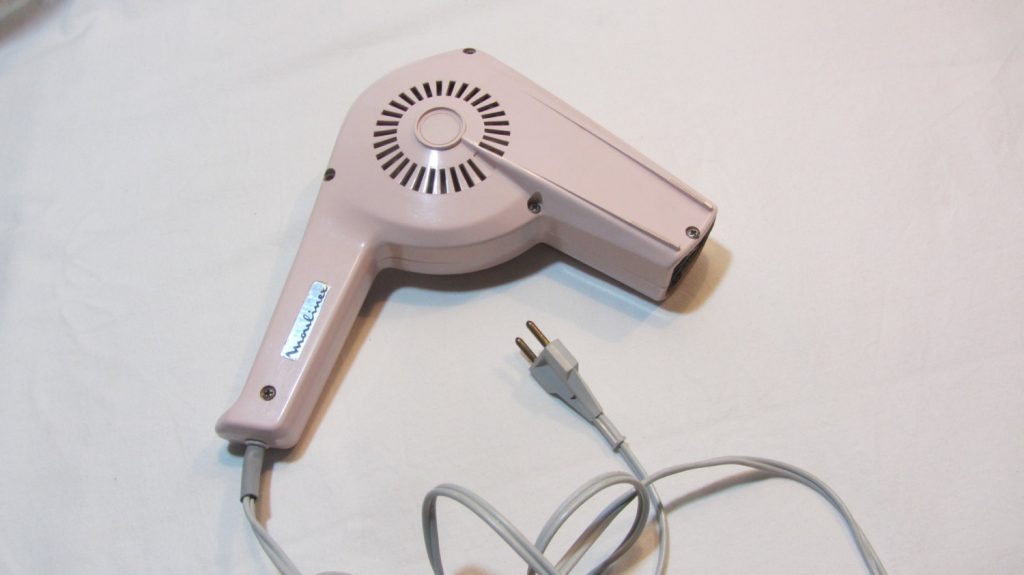
In the 1970s, the U.S. Consumer Product Safety Commission set up guidelines that hair dryers had to meet to be considered safe to manufacture. Since 1991 the CPSC has mandated that all dryers must use a ground fault circuit interrupter so that it cannot electrocute a person if it gets wet. By 2000, deaths by blowdryers had dropped to fewer than four people a year, a stark difference to the hundreds of cases of electrocution accidents during the mid-20th century. (Source).
Vintage Ads & Vintage Images
1938 American Hairdresser Magazine Ad.
Even men got under the hood.
1960s Ronson Hood N’ Comb Hair Dryer ad.
When one needs to get out of the house quickly, you take matters into your own hands.
1960s General Electric Medallion Hair Dryer.
1950s “Turbinator” Hair Dyer ad.
My hair would never look like this, if it was dried in the “Fresh Desert Air”.
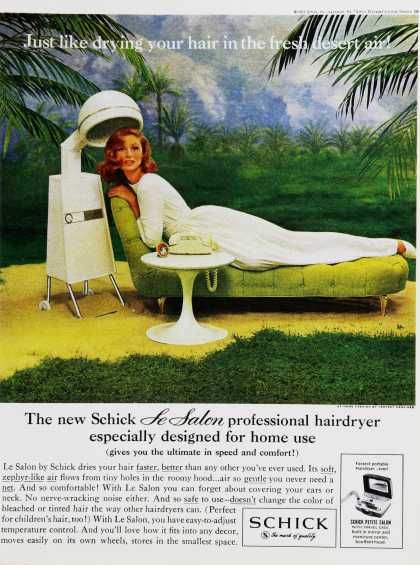
1951 Sears Spring / Summer Catalog page featuring an ad for a Beauty Shop right in your own home! Complete 7-piece set that includes a ‘Heavy-duty Dryer’.
Source: Christmas.musetechnical.com
1920s photo of a woman getting her hair dried with a very fancy hair dryer.
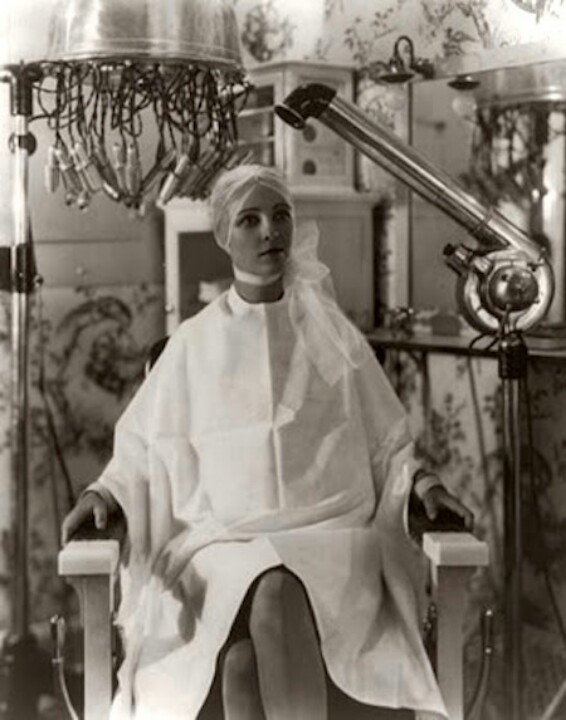
I would be scared if this was what was drying my hair. 1930s vintage image.
Germany,1977 ad. I can’t stop laughing.
Question time: Do you own a vintage hair dryer that works? If you don’t currently own one, would you? Share your thoughts in the comments below.\
FURTHER READING:
Liz

